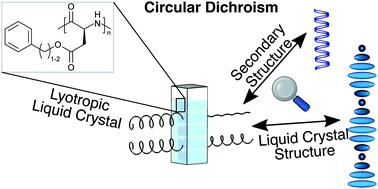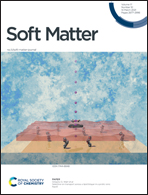Treating anisotropic artefacts in circular dichroism spectroscopy enables investigation of lyotropic liquid crystalline polyaspartate solutions†
Abstract
Circular dichroism (CD) spectroscopy is commonly used for investigation of the secondary structure of biomolecular compounds as well as polymers in isotropic solution. In anisotropic solution, the usage of the apparent CD is prone to misinterpretations due to artefacts from contributions of e.g. linear dichroism (LD). Herein, a method for the complete cancelation of anisotropic artefacts in the apparent CD is developed and its validity proven. The approach is further used for investigation of the conformation and the lyotropic liquid crystalline (LLC) structure of a copolyaspartate. For this system, a temperature-dependent change of the polymer's helical conformation (helix reversal) is known. Furthermore, a rotation of the aligned polymer helices inside a magnetic field (helix realignment) is independently present, occurring at a lower temperature compared to the helix reversal. In the current study, the helix reversal is confirmed and found to be accompanied by a change of the LLC structure. A cholesteric structure is detected and revealed to change its sense (cholesteric reversal) at the temperature at which the helix realigns in the magnetic field. The determination of the cholesteric sense is enabled by measuring the induced CD of an achiral dye, dissolved in the anisotropic polymer solution. Investigation of the anisotropic polymer solution is, thus, only made possible by cancellation of the aforementioned anisotropic artefacts. This allows the observation of changes of the liquid crystal structure from right-handed cholesteric, through left-handed cholesteric, to nematic with increasing temperature.



 Please wait while we load your content...
Please wait while we load your content...